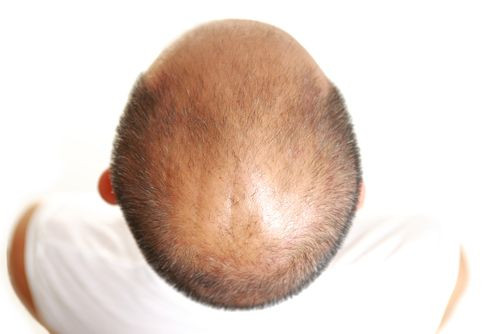Baldness Cure? Alopecia Patients May Soon Have Reliable Drug Treatment To Reverse Severe Hair Loss

Hair loss can be very emotional and confidence-impairing, but for men and women who lose clumps of hair at a time throughout their body, it can be life-changing. A team of geneticists and dermatologists set out to find a treatment for the balding disease known as alopecia areata and published their hopeful findings in the journal Nature Medicine.
Alopecia areata is an autoimmune disease in which the body mistakenly attacks hair follicles and causes them to fall out. It affects one percent of the population, causing a person to lose hair from not only the head, but also the legs, arms, chest, back, and virtually anywhere hair may grow. Researchers from Columbia University Medical Center used a drug designed to treat bone marrow disorders because of its ability to block enzymes in the immune system from attacking the hair.
Success came after the new class of medicines known as JAK inhibitors were tested on mice, and they continued on testing a small group of seven men and five women with alopecia areata. One of the study’s participants, Brian H., who asked The New York Times that his last name be withheld for privacy reasons, began experiencing alopecia areata in his 20s and believes it marred his job and relationship success. Everything changed after numerous failed treatments and he enrolled into the study.
“Pretty quickly, there were sort of fringes,” Brian said. Then “three or four large areas started to show hair growth,” and by five months, he had hair on his head, arms, and even his back. “I was blown away.” He is one of the lucky ones, for not all of the participants experienced his level of success, and it is too early to announce a cure for the disease, which currently has none.
“It appears to work — not in everyone, but in the majority,” the study’s co-author Dr. Julian Mackay-Wiggan, who serves as the director of Columbia’s dermatology clinical research unit, told The Times. “We need a lot more data on the long-term risks in healthy individuals. But it’s certainly very exciting in terms of hair growth. It was surprising how quickly and impressively the growth occurred.”
Currently, corticosteroids in the form of injections or topical medications are being used to treat patches of baldness caused by alopecia areata because of the steroid’s ability to suppress the immune system, according to the American Academy of Dermatology. However, injections are painful and the topical treatment doesn’t work as well but is often used on children to avoid the pain of the shots. There is a “major need for improving the treatment,” according to Dr. Luis Garza, a dermatologist at Johns Hopkins Hospital who was not involved in the research.
The Columbia University team also plans to have participants undergo another trial test with a different JAK inhibitor called tofacitinib, which is approved for rheumatoid arthritis and has already successfully grown hair on mice. In June, Yale researchers published a study on their two-month experiments with tofacitinib, which improved hair loss and plaque psoriasis, a skin condition that causes red, scaly, and irritated areas of skin. Researchers believe the remarkable hair growth is a result of the drug's ability to turn off the immune system’s attack on hair follicles.
“The results are exactly what we hoped for,” Dr. Brett A. King, assistant professor of dermatology at Yale University School of Medicine, said in a press release. “This case highlights the interplay between advances in science and the treatment of disease and it provides a compelling example of the ways in which an increasingly complex understanding of medicine, combined with ingenuity in treatment, benefits patients.”
Source: Christiano AM, Clynes R, Xing L, Dai Z, Jabbari A, Cerise JE, and et al. Alopecia areata is driven by cytotoxic T lymphocystes and is reserved by JAK inhibition. Nature Medicine. 2014.



























